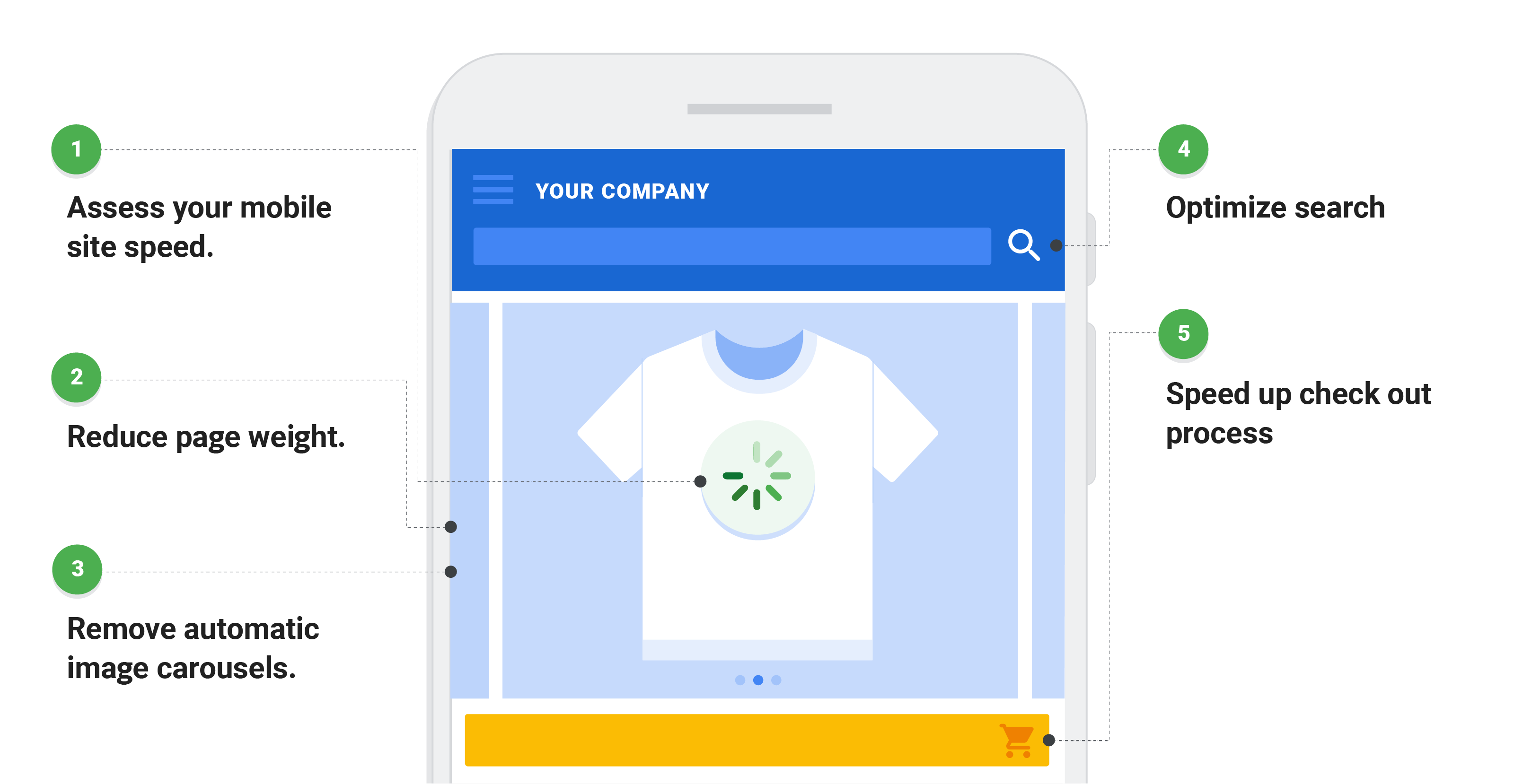Attain Peak Performance with Data-Driven Mobile Optimization
Attain Peak Performance with Data-Driven Mobile Optimization
Blog Article

The Ultimate Overview to Mobile Optimization: Strategies for Enhancing Website Efficiency on Smartphones and Tablets
The techniques for boosting site efficiency on mobile platforms go beyond simple adaptation; they encompass a thorough technique that includes receptive design, speed optimization, content methods, and individual experience enhancements. By delving right into the ins and outs of mobile optimization, services can not just meet individual expectations but likewise stay in advance in a competitive electronic landscape.
Relevance of Mobile Optimization
Mobile optimization plays a critical duty in improving user experience and driving conversion prices in the ever-evolving electronic landscape. With the increasing use smartphones and tablet computers for surfing the net, guaranteeing that websites are maximized for mobile phones has become necessary for companies - Mobile Optimization. A mobile-optimized internet site not just adapts seamlessly to different screen dimensions however additionally tons quickly, giving users with a smooth and delightful searching experience
In today's fast-paced globe, individuals expect immediate accessibility to info on the go. A website that is not enhanced for smart phones threats losing potential customers due to slow down filling times or a bad user interface. By buying mobile optimization, organizations can satisfy the requirements of their mobile audience, bring about greater involvement and enhanced conversions.
Moreover, online search engine like Google focus on mobile-friendly internet sites in their rankings, making mobile optimization vital for boosting exposure and bring in organic web traffic. Mobile Optimization. Generally, the significance of mobile optimization can not be overemphasized, as it directly influences user satisfaction, conversion rates, and overall company success in the digital realm
Responsive Design Techniques
Applying receptive layout strategies guarantees that sites dynamically readjust their format and material based on the individual's gadget screen size, providing a consistent user experience throughout different platforms. Among the most typical methods made use of in responsive design is developing fluid grids that permit material to resize proportionally to the display dimension. This guarantees that elements on the website keep their relative spacing and setup, enhancing the watching experience for users on various devices.
Additionally, making use of adaptable images that can scale with the size of the viewport helps protect against photos from being cropped or misshaped on smaller sized displays. CSS media inquiries play a crucial role in responsive layout by allowing designers to use particular designs based on the device features such as display size, height, and positioning. By leveraging media questions, sites can adjust their format and style to fit smart devices, tablet computers, and desktop screens seamlessly.
Incorporating responsive design techniques not just boosts customer experience yet additionally adds to enhanced internet search engine rankings, as online search engine like Google prioritize mobile-friendly websites in their mobile search outcomes. By embracing receptive design, sites can provide to the diverse requirements of users accessing web content on a range of devices, ultimately driving involvement and conversions.
Speed and Efficiency Optimization

One trick method is maximizing images and multimedia web content to minimize documents dimensions without endangering quality. Compressing images, leveraging modern photo styles like WebP, and lazy loading offscreen pictures are reliable methods to accelerate tons times (Mobile Optimization). Reducing HTTP requests, leveraging internet browser caching, and lowering server response times are essential steps in enhancing performance.
Implementing a material delivery network (CDN) can likewise substantially increase website speed by distributing material across multiple web servers worldwide, decreasing latency for individuals accessing the website from various areas. Prioritizing important above-the-fold content and postponing non-essential scripts can additionally boost his comment is here perceived efficiency. By concentrating on speed and efficiency optimization, internet sites can provide a smooth and gratifying user experience on mobile phones.
Mobile-Friendly Material Approaches
To optimize web content for mobile tools, it is vital to prioritize readability and engagement through strategic formatting and concise messaging. Mobile-friendly content methods entail tailoring the discussion of info to suit the smaller sized screens and on-the-go nature of smartphone and tablet computer individuals. One essential facet is to make sure that message is conveniently legible without the requirement for focusing, making use of font dimensions that are clear on mobile screens. Furthermore, separating material right into much shorter paragraphs and here are the findings using bullet points can help enhance readability and make it much easier for customers to take in info rapidly.
Integrating engaging visuals, such as photos and videos maximized for mobile watching, can likewise boost the overall individual experience. These visuals should be relevant, premium, and tons rapidly to avoid individuals from shedding passion. Integrating interactive aspects like tests, surveys, or studies can improve individual engagement and motivate active involvement.
Individual Experience Enhancements
Structure on the structure of mobile-friendly web content approaches, enhancing user experience involves maximizing every touchpoint to guarantee seamless interaction and contentment for mobile users. One critical facet of improving individual experience on mobile tools is guaranteeing quick packing times.
In enhancement to speed up and responsive design, simplifying navigating is necessary for a positive individual experience. Clear and instinctive navigation menus, famous search bars, and tactically positioned call-to-action switches can help customers easily discover what they are trying to find on a mobile site. Maximizing types for mobile users by minimizing the variety of fields and using auto-fill functions can additionally enhance the overall customer experience. By concentrating on these individual experience enhancements, websites can effectively engage and preserve mobile visitors.
Final Thought
Finally, mobile optimization is essential for boosting web site efficiency on click here to find out more smart devices and tablet computers. By executing responsive layout techniques, optimizing rate and performance, producing mobile-friendly web content, and enhancing customer experience, businesses can efficiently reach and engage with their mobile audience. It is crucial for web sites to adjust to the boosting mobile use trends in order to remain affordable in the digital landscape.
Report this page